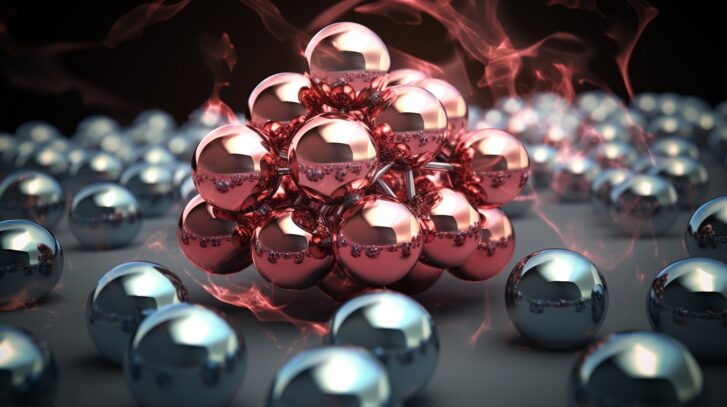Atoms are the building blocks of matter, and they consist of three types of subatomic particles: protons, electrons, and neutrons. Protons and electrons have positive and negative charges, respectively, and they balance each other to make the atom electrically neutral.
Neutrons have no charge, but they play a crucial role in holding the nucleus of the atom together and determining its mass and stability. Different elements have different numbers of protons and electrons, which define their chemical properties and behavior.
For example, the element magnesium has 12 protons and 12 electrons, and 2 valence electrons and it is a light, silvery metal that is essential for life and widely used in various industries. But how many neutrons does magnesium have?
This is not a simple question, because magnesium can have different forms, called isotopes, that have different numbers of neutrons. In this article, we will explore the isotopes of magnesium, how they differ in the number of neutrons, and what are their applications and uses.
The Number is Not Always the Same
Magnesium has three stable isotopes, which are 24 Mg, 25 Mg, and 26 Mg. These isotopes have 12, 13, and 14 neutrons, respectively. We can calculate the number of neutrons for each isotope by subtracting the number of protons (12) from the atomic mass. For example, 25 Mg has 25 – 12 = 13 neutrons.
The three isotopes of magnesium have different natural abundances, which means they occur in different proportions in nature. According to the [International Atomic Energy Agency], the natural abundances of the three isotopes of magnesium are as follows: 24 Mg (78.99%), 25 Mg (10.00%), and 26 Mg (11.01%).
This means that about 79% of the magnesium atoms in nature have 12 neutrons, 10% have 13 neutrons, and 11% have 14 neutrons. The natural abundance of an isotope is related to its relative stability, which is influenced by the ratio of protons to neutrons in the nucleus. Generally, isotopes with a higher ratio of protons to neutrons are less stable and more likely to undergo radioactive decay.
They have similar ratios of protons to neutrons, which makes them all stable and non-radioactive. However, there are also some unstable and radioactive isotopes of magnesium, such as 27 Mg and 28 Mg, which have 15 and 16 neutrons, respectively. These isotopes are very rare and have short half-lives, which means they decay quickly into other elements.
How Can the Number of Neutrons Affect the Structure of Magnesium?
The number of neutrons can affect the structure of magnesium in several ways, such as its mass, stability, and isotopic composition.
- The mass of an atom is determined by the sum of the number of protons and neutrons in its nucleus. The number of protons is fixed for a given element, but the number of neutrons can vary, resulting in different isotopes of the same element.
- The stability of an atom is influenced by the ratio of protons to neutrons in its nucleus. Generally, isotopes with a higher ratio of protons to neutrons are less stable and more likely to undergo radioactive decay. The three stable isotopes of magnesium have similar ratios of protons to neutrons, which makes them all stable and non-radioactive.
- The isotopic composition of an element is the relative abundance of its different isotopes in nature or in a sample. The isotopic composition of an element can vary depending on the source, the process, and the environment. For example, the natural abundance of the three stable isotopes of magnesium are as follows: 24 Mg (78.99%), 25 Mg (10.00%), and 26 Mg (11.01%). This means that about 79% of the magnesium atoms in nature have 12 neutrons, 10% have 13 neutrons, and 11% have 14 neutrons.
What Does it Mean in Practice?
In practice, it means that the structure of magnesium can vary depending on the source, the process, and the environment. For example, the isotopic composition of magnesium can change due to various factors, such as the formation and melting of ice sheets and glaciers, the photosynthetic activity and water use efficiency of plants, and the dietary preferences and migration patterns of animals.
For example, magnesium isotopes can help determine the age and composition of rocks and minerals, trace the uptake and metabolism of magnesium in living organisms, diagnose and treat various diseases and disorders, and improve the quality and performance of various materials and products.
More About the Diversity of Magnesium
Forms of magnesium are variations of the same element that have the same number of positively charged particles, but different numbers of neutrally charged particles. The number of positively charged particles determines the identity of the element, while the number of neutrally charged particles affects its mass and stability.
These forms have 12, 13, and 14 neutrally charged particles, respectively. We can calculate the number of neutrally charged particles for each form by subtracting the number of positively charged particles (12) from the mass. For example, 25 Mg has 25 – 12 = 13 neutrally charged particles.
What are the applications and uses of magnesium forms in various fields?
Magnesium forms have various applications and uses in different fields, such as geology, biology, medicine, and industry.
- Geology: It can serve in studying the origin and evolution of the Earth and other planets, as well as the processes that shape their surface and interior. For example, magnesium forms can help determine the age and composition of rocks and minerals, the sources and sinks of carbon dioxide in the atmosphere, the formation and melting of ice sheets and glaciers, and the origin and distribution of water and other volatiles in the solar system.
- Biology: This element can be used to trace the uptake and metabolism of magnesium in living organisms, as well as the interactions between biotic and abiotic factors in the environment.
- Medicine: Magnesium forms can be used to diagnose and treat various diseases and disorders, as well as to monitor the effects of drugs and therapies. Some of its forms can be used to deliver targeted radiation therapy to cancer cells, as well as to enhance the contrast and resolution of magnetic resonance imaging (MRI).
- Industry: Another application is to improve the quality and performance of various materials and products, as well as to ensure their safety and reliability. The best examples are alloys, ceramics, polymers, and nanomaterials, such as their strength, hardness, ductility, conductivity, and corrosion resistance.
FAQs
How can I calculate the number of neutrons for an isotope of magnesium?
You can calculate the number of neutrons for an isotope of magnesium by subtracting the number of protons (12) from the atomic mass. For example, 25 Mg has 25 – 12 = 13 neutrons.
What are protons, electrons, and neutrons?
Protons, electrons, and neutrons are subatomic particles that make up atoms. Protons and electrons have positive and negative charges, respectively, and they balance each other to make the atom electrically neutral. Neutrons have no charge, but they play a crucial role in holding the nucleus of the atom together and determining its mass and stability.
What are isotopes and how are they different from elements?
Isotopes are forms of the same element that have the same number of protons, but different numbers of neutrons. The number of protons determines the identity of the element, while the number of neutrons affects its mass and stability.
Which element can burn in both oxygen and nitrogen atmospheres?
Magnesium is one of the few elements that can burn in both oxygen and nitrogen atmospheres. When magnesium burns, it produces a bright white light and forms magnesium oxide and magnesium nitride. The isotopic composition of magnesium can affect the intensity and color of the flame, as well as the ratio of the products.
The Bottom Line
The number of neutrons affects the mass and stability of the isotopes, as well as their natural abundance in nature. Magnesium isotopes have various applications and uses in different fields, such as geology, biology, medicine, and industry. This element is also an abundant, essential, and flammable, with the ability to produce a bright white light when it burns.
Related Posts:
- How Many Valence Electrons Does Magnesium Have? How…
- How Many Strains Should a Probiotic Have? - An Insight
- Spirit Animals and Birthdays: Find Out Which One Is Yours
- 6 Ways to Empty Your Mind if You Are Stressed Out:…
- High Functioning Bipolar Disorder - How It Affects…
- How Childhood Trauma Affects Us as Adults - Healing…














